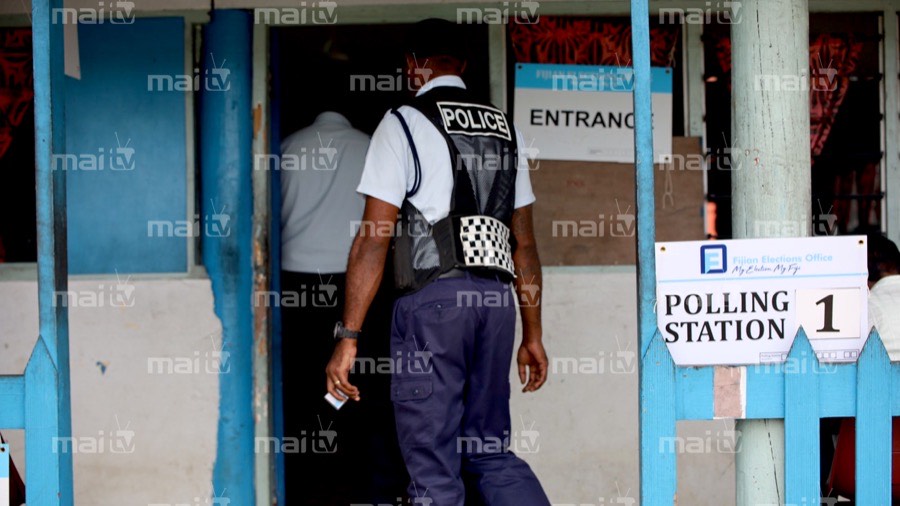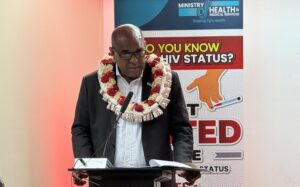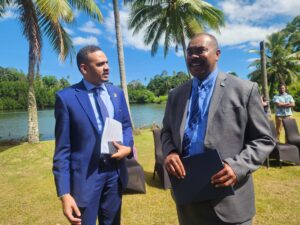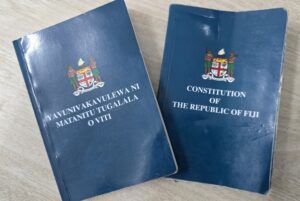Politics is a numbers game and if the trend from the last elections continues – the numbers are trending towards the Opposition, and it is the ruling FijiFirst party that has to take corrective action to steer the numbers their way.
It’s also becoming clear to all parties that voter turnout will decide who wins this election, but no one is sure who will really benefit from a low voter turnout.
In the 2014 elections, FijiFirst won decisively with 59.17 percent of the vote or 293,714 votes. Voter turnout in 2014 was 84.6 percent.
In the 2018 elections, FijiFirst barely scraped over the line with a win of 50.02 percent of the vote or 227,241 votes. Voter turnout was just under 72 percent.
Between 2014 and 2018 FijiFirst lost 66,473 voters.
66,473 people who voted for FijiFirst in 2014 either changed their vote to another party in 2018 or just didn’t turn up to vote for them.
That is the challenge for FijiFirst. Either win back voters they lost to other parties in 2018, or excite and inspire their voters who stayed at home in 2018 to turn up for them in 2022.
There are also strong signs of growing support for FijiFirst in the iTaukei community and another strategy for FijiFirst is to pull people who did not vote for them in 2018, to vote for them in 2022. Mosese Bulitavu the former SODELPA MP is an example, as well as the former NFP candidate Ridhi Damodar.
The demographics as per the 2019-2020 Household Income and Expenditure Survey also favours the more iTaukei-based parties. According to that survey (which was criticized by the Government) 62 percent of the population is iTaukei and 34 percent of the population is Indo-Fijian.
While parties have made attempts to broaden their appeal to all groups, Fijians have traditionally voted along ethnic lines and it is generally the accepted norm that the majority of the Indo-Fijian community support FijiFirst, while the majority of the iTaukei support the candidates of PAP/SODELPA.
FijiFirst’s strength of course is that Bainimarama has broad appeal, garnering the support of a big majority of the Indo-Fijian vote and a good chunk of the iTaukei vote. His numbers however went down in 2018.
From 40.79 percent of the vote or 202,459 votes in 2014 to 167,732 votes or 36.92 percent of the vote in 2018. That was 34,727 less votes for him – and the question now is if Bainimarama can pull them back or inspire them enough to vote for him again.
Bainimarama is energized and together with his right-hand man, the AG Aiyaz Sayed-Khaiyum they have been hitting the campaign trail hard and at pace.
Sayed-Khaiyum is one of the only few politicians who built on their numbers from 2014 – increasing his votes from 13,753 to 17,271 in 2018.
FijiFirst will look to hold their strong support within the Indo-Fijian community and maintain or increase the margin of their iTaukei votes to win.
One of the challenges for them though is the growing strength of the NFP who are also cultivating a broad appeal.
The NFP won 5.45 percent of the vote in 2014 and grew it to 7.38 percent in 2018. They will look to increase that in 2022 and a few things are working in their favour. One is that NFP leader Biman Prasad has solidified his standing among the NFP base, plus the popularity of MP Lenora Qereqeretabua and the firm support for Pio Tikoduadua amongst his constituency. Further to that they have added strong candidates such as Sashi Kiran, John Fatiaki and George Shiu Raj who will surely add to their numbers.
Even if they make a small shift, a small shift can have a major impact in a tight election.
Further challenging Fiji First is the presence of former Prime Minister and Labour leader Mahendra Chaudhry who will be on the ballot after missing out in 2014 and 2018. Chaudhry’s influence has largely waned but he may still pose a threat if he pulls back some of his old support base that had effectively switched to Fiji First.
The FijiFirst’s third-best vote-getter after PM and AG is Parveen Bala, and he also saw a drop in his numbers from 6358 in 2014 to 5063 in 2018. Bala also faces a stiff challenge from former TISI Sangam Fiji President Sadasivan Naicker who is standing for PAP. While the bet is still on Bala, the challenge is expected to make a dent. PAP also has promising candidates such as Charan Jeath Singh and former permanent secretary Parmesh Chand.
PAP and Rabuka are undertaking and attempting a hostile takeover of SODELPA’s 2018 electorate and the feedback on the ground is that they are gaining traction – but one can never really know. SODELPA continues to have strong pockets of support and could potentially be Kingmakers – but some observers also believe the party could be in trouble of even making the 5 percent threshold following the departure of Rabuka and the defection of its other big vote-getters such as Tabuya, Bulitavu, Lalabalavu, Vosanibola and Saukuru.
Rabuka will look to build on the 77,040 votes he won in the last election. He has a stronger and more united team behind him now in PAP compared to the infighting that dogged his leadership at SODELPA. But he is still a divisive figure in Fijian politics and is working hard to rebrand his image as a uniting force with Biman Prasad by his side. This is his fifth election after winning in 1992 and 1994 and losing in 1999 and 2018. If he loses this one his political career is effectively over.
The role and impact of smaller parties such as Unity Fiji which will struggle to make the 5 percent threshold will again come under scrutiny.
The battle for Fijian hearts and minds is heating up as the campaign enters its final week, and as parties target the numbers they need to secure victory.
All these numbers however won’t mean a thing if voters don’t turn out to vote. Victory will go to the party or parties whose voters are excited and motivated to exercise their right in filling the ballot box.
Opinion Piece









